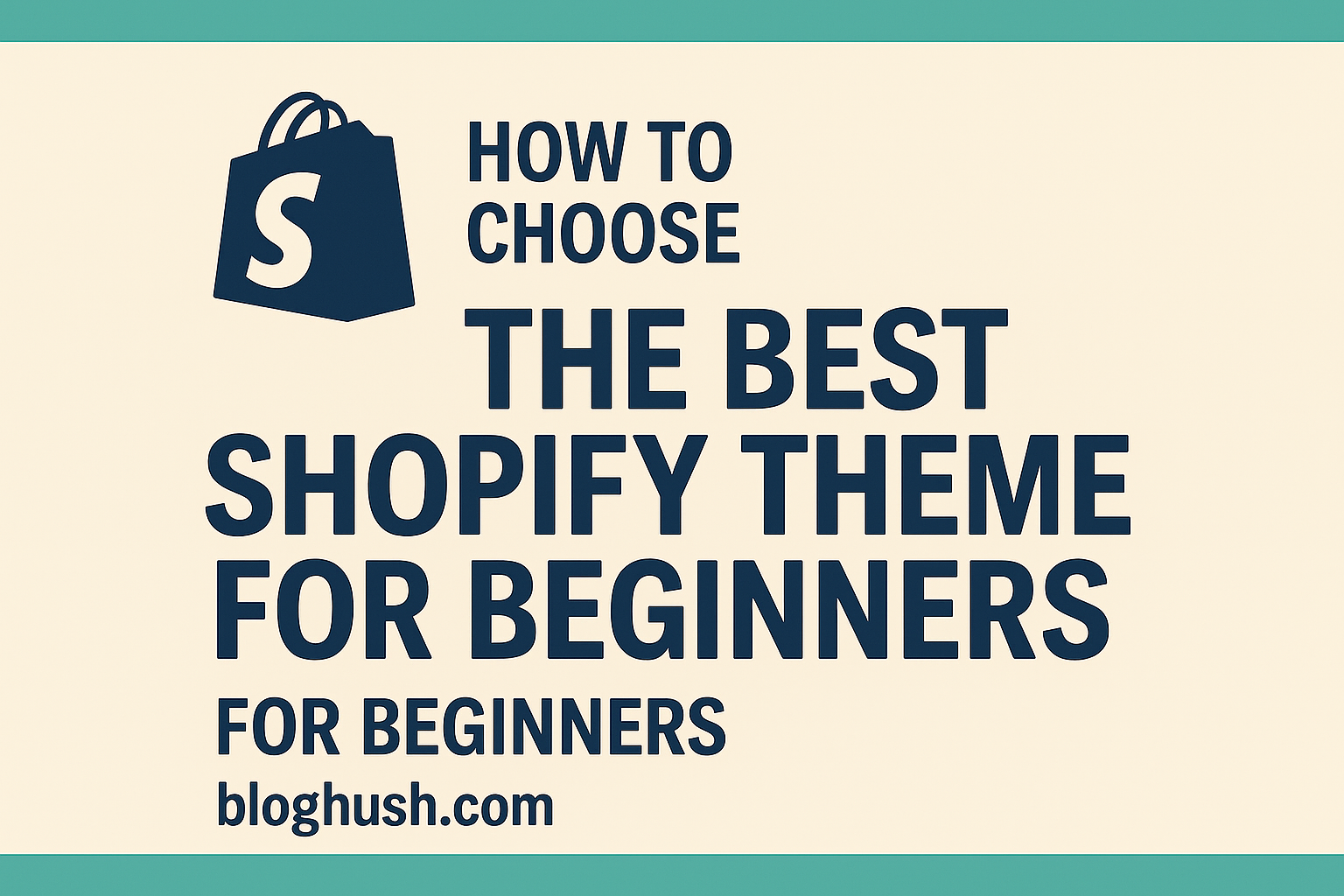Your Shopify store’s theme is like the storefront window—it’s the first thing customers see, and it can make or break their shopping experience. At BlogHush.com, I’m here to guide you through choosing the best Shopify theme for beginners with a clear, straightforward approach. With 15 years of experience in Shopify, WordPress, and SEO, I’ve helped countless small business owners and new entrepreneurs set up stores that look professional and attract customers. In this guide, we’ll explore how to pick a Shopify theme in 2025 that’s perfect for your store, even if you’re just starting out. Let’s dive in!
Why Your Shopify Theme Matters
A well-chosen theme ensures your store is easy to navigate, looks professional, and works seamlessly on all devices. Shopify reports that 67% of its transactions in 2024 were made on mobile devices, a trend continuing into 2025, making a mobile-friendly theme essential (Shopify Blog, 2025). A good theme also supports SEO by loading quickly and being structured for search engines, helping your store rank higher on Google, especially with Google’s emphasis on mobile-first indexing in 2025 (Google Search Central).
Step-by-Step Guide to Choosing a Shopify Theme
Step 1: Understand Your Store’s Needs
- Consider your products: Are you selling physical items like clothing, or digital products like eBooks? For example, a clothing store might need a theme with a strong focus on visuals.
- Think about your audience: If your customers are beginners, prioritize simplicity and clear navigation.
- List your must-have features: Do you need a blog section, product filters, or a specific layout (e.g., grid or list)?
Step 2: Explore Shopify’s Theme Store
- In your Shopify dashboard, navigate to Online Store > Themes.
- Click “Explore Free Themes” to see Shopify’s free options, or visit the Shopify Theme Store for premium themes.
- Use filters like “Free,” “Industry” (e.g., Fashion, Electronics), or “Features” (e.g., Mobile Responsive) to narrow your choices.
Insert Image: Mockup of Shopify Theme Store with free themes.
Step 3: Focus on Free Themes for Beginners
- Shopify offers several free themes in 2025 that are perfect for beginners, such as:
- Dawn (version 12.0, 2025): A minimalist, modern theme with enhanced mobile features and faster load times.
- Craft (version 8.0, 2025): Ideal for artisanal products, with storytelling sections and improved product galleries.
- Spotlight (version 7.0, 2025): A visually-focused theme with updated hover effects, great for product showcases.
- Click “Preview” to see how each theme looks with sample products.
Step 4: Check for Mobile Responsiveness
- In the theme preview, click the mobile icon to test how the theme looks on a smartphone.
- Ensure navigation menus, buttons, and images adjust well to smaller screens.
- A mobile-friendly theme is critical since most Shopify shoppers use mobile devices in 2025.
Step 5: Test Customization Options
- Click “Install” to add a theme to your store, then select “Customize.”
- Check if you can easily adjust colors, fonts, and layouts without coding, using Shopify’s updated drag-and-drop editor (Shopify, 2025).
- Look for features like section reordering (e.g., add a featured product carousel).
Step 6: Install and Publish Your Theme
- Once you’re happy with the theme, click “Publish” to make it live on your store.
- If you’re not ready, save it as a draft and test another theme—Shopify lets you try multiple themes before publishing.
- After publishing, visit your store to ensure everything looks as expected.
Tips for Choosing the Best Shopify Theme
- Keep It Simple: As a beginner, avoid overly complex themes with too many features—they can slow down your store.
- Prioritize Speed: A fast-loading theme improves user experience and SEO. Test theme speed using Google PageSpeed Insights, which remains a recommended tool in 2025 (Google Search Central).
- Match Your Brand: Choose a theme that aligns with your brand’s style (e.g., minimalist for eco-friendly products, bold for fashion).
What’s Next?
You’ve chosen a Shopify theme that sets your store up for success—well done! Next, optimize your store for search engines with our Shopify SEO Guide or enhance its functionality with apps (see Best Shopify Apps for E-Commerce Beginners). Stay tuned to BlogHush.com for more e-commerce tips!

Leave a Reply